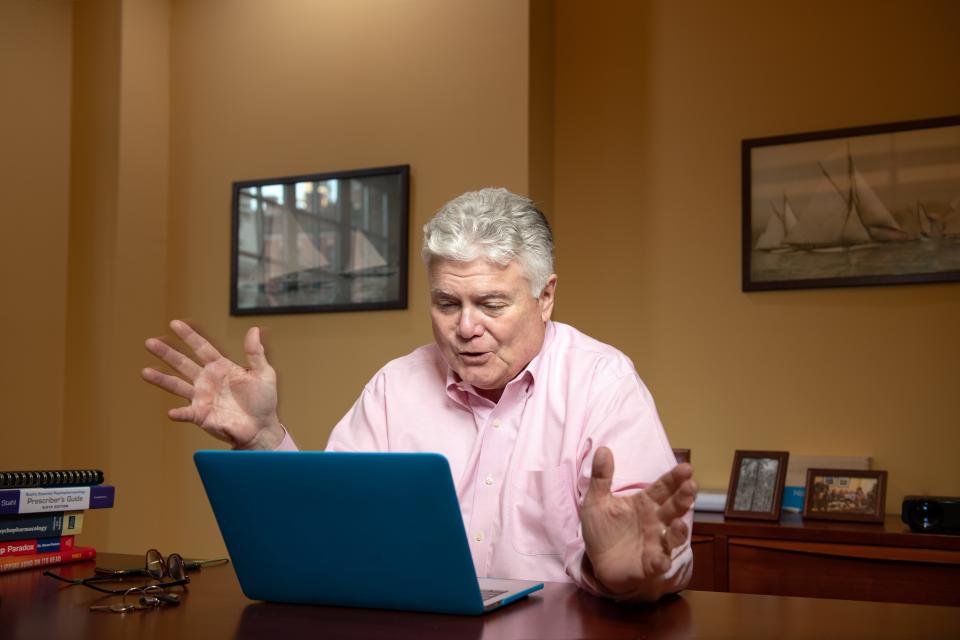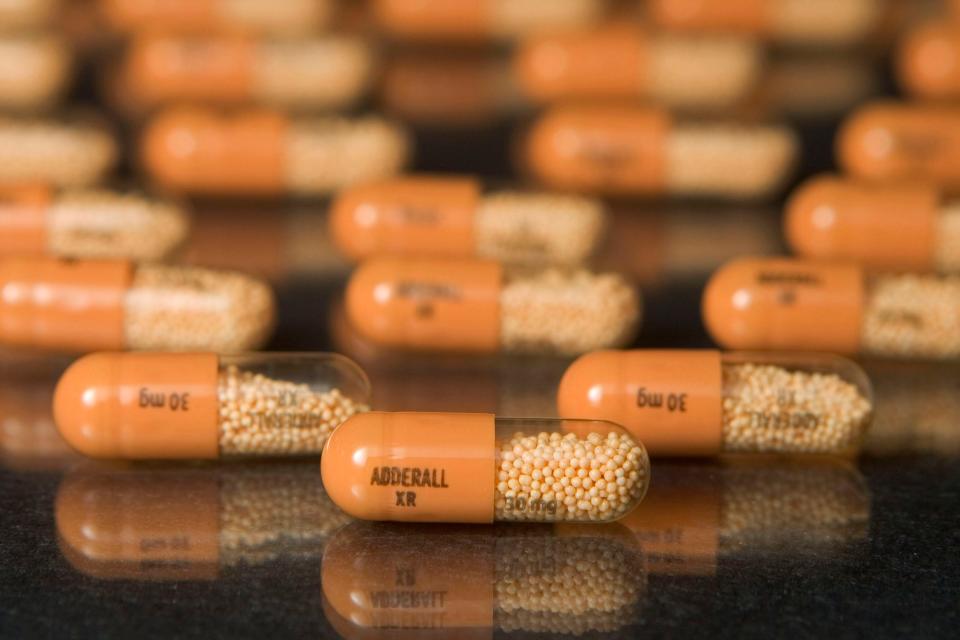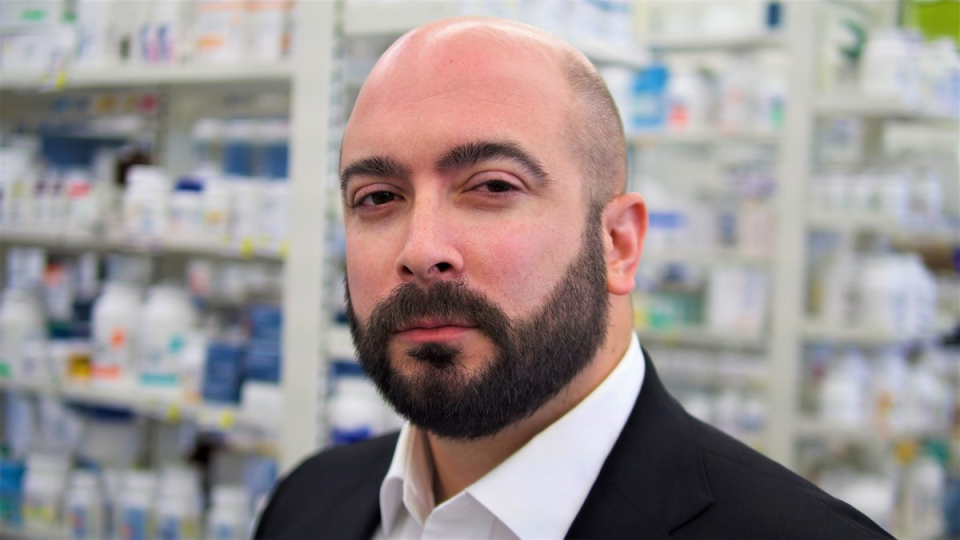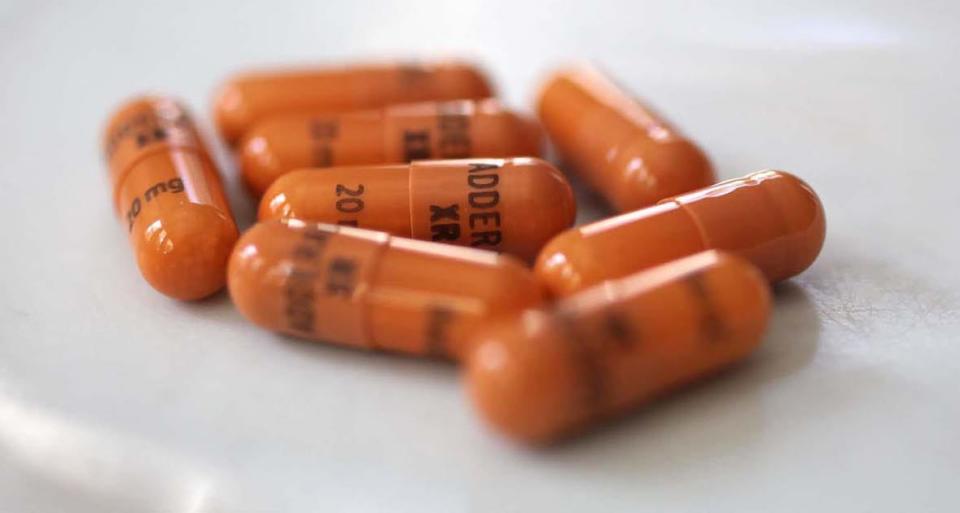ADHD drug prices rise as Adderall shortage leaves patients scrimping to fill prescriptions
Amid a nationwide ADHD drug shortage, patients are paying significantly more for medication to help them direct their focus at school, work and home.
The shortage has placed financial pressure on families, forcing them to search for alternatives. Often, the only options they can find are expensive brand-name drugs.
The upward trend can be seen in the prices retail community pharmacies pay for several popular ADHD drugs, which a USA TODAY analysis found have outpaced inflation – and in some cases doubled or tripled in price – since Adderall fell into short supply starting in October 2022.
One mother from Delaware diagnosed with ADHD, whose husband and 17-year-old daughter also have attention-deficit/hyperactivity disorder, told USA TODAY that when the Adderall shortage was announced, their doctor switched her daughter to the only alternative they could find, Vyvanse.
As a result, the amount they pay each month after insurance for her medication skyrocketed from under $20 to $300. The medication is too expensive for more than one person in the household, and she said her priority is her daughter’s health and education.
“With medication and accommodations at school, my daughter is a straight-A student. Without the medication, she’s failing,” said the mother, who asked to be identified only by her first name, Sam, because her husband doesn’t want his employer to know about his diagnosis. “It’s that stark of a difference.”
Many drugs used to treat ADHD are rising in price, as reflected in National Average Drug Acquisition Cost data. As of mid-December, the amount pharmacies paid for certain dosages of both brand-name and generic Adderall rose faster than inflation. For some versions of methylphenidate, sold under the brand names Ritalin and Concerta, the average price paid by small- to mid-size independent and chain pharmacies has nearly doubled since last year. The average cost of dexmethylphenidate, sold under the brand name Focalin, more than doubled.
Sam went unmedicated for weeks after the remaining Focalin she was rationing ran out, leading to challenges such as forgetting to eat, difficulty maintaining focus at work and struggling to keep up with housework. Much like a person with a broken leg moving around without a crutch, everyday tasks are more difficult and take more energy. Unlike someone with a cast, though, many ADHD symptoms are internal and invisible to others.
“You can't really compare it, but if there was a shortage of cancer drugs, there would be a lot more uproar than there is with the shortage of ADHD medication because people don't seem to realize this is a disability," Sam said. “It is very debilitating. It does have quite an impact on your quality of life.”
At least 6 million children ages 3-17 have been diagnosed with ADHD in the U.S., according to the Centers for Disease Control and Prevention. While the picture is less clear for those 18 or older, some studies have estimated ADHD affects 11 million American adults.
Sam’s family is one of many whose lives have been disrupted by the shortage, which started last year after manufacturing delays at companies that make Adderall, including Teva, according to the Food and Drug Administration.
Then, in a domino effect, other common ADHD drugs became scarce as patients sought out alternatives. Increased demand for ADHD drugs and tight regulations on these medications, created a “confluence of factors,” said Antonio Ciaccia, CEO of 46brooklyn Research, a nonprofit drug pricing research firm based in Ohio.
Search our database to track the changes in the price pharmacies pay for common ADHD medications.
'An additional ADHD tax'
The drug shortage is an added source of anxiety and stress for those with ADHD. When forced to go without it or to use imperfect substitutes, performance in the classroom or workplace worsens. Routines and relationships suffer.
“People trivialize ADHD and make jokes about it, but it’s not a laughing matter,” said Dr. Edward Hallowell, a child and adult psychiatrist and leading expert in the field who lives with the condition himself. “Traffic accidents are much more common in people with ADHD, and if you don’t have your meds, it becomes even more dangerous.”

Searching for a pharmacy that has medication during the shortage is like “prospecting for gold,” Hallowell said. Other patients have likened their experiences to playing a frustrating and never-ending game of “find the medication.”
In addition to spending more on medication, Sam and her family have had to travel longer distances and pay extra for gas to get to pharmacies with available inventory.
“We shouldn’t be having to drive an hour round trip for 30 tablets,” she said. “It’s almost an additional ADHD tax.”
The process often begins with calling pharmacies to see which have medication. If they are not regular customers, however, that can be thwarted by efforts to deter illegal distribution or abuse of drugs.
Some pharmacies won’t disclose what controlled substances they have over the phone as a security measure, said Michael Ganio, senior director of pharmacy practice and quality at the American Society of Health-System Pharmacists.
If a patient lucks out and finds something in stock, it becomes a race against the clock to coordinate with their doctor and send over a prescription to the right pharmacy before the inventory runs out.
Semi-effective medication can be better than none at all, but patients compare that to using glasses at half the strength you need. Some take what they can get, even if they don’t react well to a particular drug or dosage. Others cannot take alternatives because they amplify anxiety, spike heart rates, affect sleep cycles or simply don’t work, according to the Cleveland Clinic.
ADHD results from low levels of dopamine and norepinephrine, neurotransmitters that play an important role in people’s motivation and ability to complete tasks, according to research by the National Institutes of Health. Stimulant medications, also used to treat narcolepsy and binge-eating disorder, work by increasing the amounts of these chemicals in the brain, which can help those with ADHD channel their focus into organizing and performing tasks.

Without the Vyvanse that Sam’s daughter now takes in lieu of Adderall, she has difficulty managing and finishing homework. An assignment that would normally take an hour or two takes six, Sam said.
Drug price data shows Vyvanse has been a more expensive alternative for years. The original manufacturer’s patent expired in August, and the FDA recently approved generic versions of the brand-name drug. Once a generic drug receives approval, it can take anywhere from a few weeks to more than a year for pharmacies to get their first shipments from manufacturers, Ciaccia said.
The FDA is currently reporting generic Vyvanse shortages at several companies, so it’s unclear how soon patients will be able to find lower-cost versions of the drug.

What caused the ADHD drug shortage?
Doctors are diagnosing more ADHD and writing more prescriptions for drugs that treat it. That, combined with limits on their production, led to shortages of these medications.
The recent rise of telehealth and virtual prescribing during the COVID-19 pandemic is one explanation for increased demand for the drugs, Ganio said, as patients gained easier access to health care providers. Practitioners were permitted to diagnose ADHD and prescribe controlled substances online, which previously required an in-person visit. That flexibility has been extended through Dec. 31, 2024.
Some people were diagnosed after pandemic closures forced them to work from home or their kids to attend school virtually. For some, the loss of a workplace or school structure aggravated symptoms. Often, when kids are diagnosed, their parents are, too.
In emailed responses to USA TODAY, the top two suppliers of Adderall blamed the shortages on the increased demand, but experts say other factors, such as federal limits on the production of controlled substances, played a role.

Stimulants such as amphetamine in Adderall or methylphenidate in Ritalin are classified as controlled substances because they “have a high potential for abuse which may lead to severe psychological or physical dependence,” according to the Drug Enforcement Administration. This classification is meant to prevent abuse or misuse.
As such, the agency oversees everything from how much manufacturers produce to how much doctors and pharmacists can prescribe and dispense. Regulatory constraints on the drug supply chain, including industrywide limits on the production of ADHD drugs, make it challenging to quickly resolve the shortage.
The DEA and the FDA have acknowledged the role of “record-high prescription rates of stimulant medications” in the ADHD drug shortage. Overall dispensing of stimulants increased by 45% in the U.S. from 2012 to 2021, according to a joint letter released by the two agencies in August.
However, there’s been “finger-pointing” among manufacturers and the DEA regarding who’s responsible for the shortage, Ganio said. The agency said manufacturers are sitting on unused ingredients, while manufacturers say they don’t have enough, and the DEA needs to loosen quota restrictions.

“In 2022, manufacturers did not produce the full amount that these limits permitted them to take – resulting in a shortfall of 1 billion doses that could have been produced but were not made or shipped – and the data for 2023 has shown a similar trend,” wrote the DEA in a letter early last month.
Three of the largest generic drugmakers, Teva, Sandoz and Sun Pharma, told USA TODAY that they have produced as much as the DEA has allowed them to and have, in fact, requested larger quotas to meet the demand.
In an emailed statement, Sun Pharma told USA TODAY that the DEA declined its request for permission to manufacture more of an ADHD medication for 2023. The company said it has repeated its request for next year and hopes to receive approval.
What’s being done to end the ADHD drug shortage?
The DEA said it has been adjusting its quota regulations and coordinating with manufacturers to increase production of ADHD stimulants.
“DEA has been in communication with the relevant manufacturers, and 17 out of 18 manufacturers have informed us that they will use their allotted quota amounts and increase production of stimulant medications,” wrote the agency in early November.
In a written statement, Sandoz said the DEA has been granting the company’s requests for a larger quota, allowing them to fulfill customer orders.
While it’s too early to know when the shortage will end, Ganio said it’s promising to see the DEA work with manufacturers and adjust its quota allocation process.
“Manufacturing can’t be turned on overnight, so hopefully the manufacturers can ramp up production and within a couple months, we see more supply hitting shelves,” he said.
This article originally appeared on USA TODAY: ADHD drug prices increase during nationwide shortage

